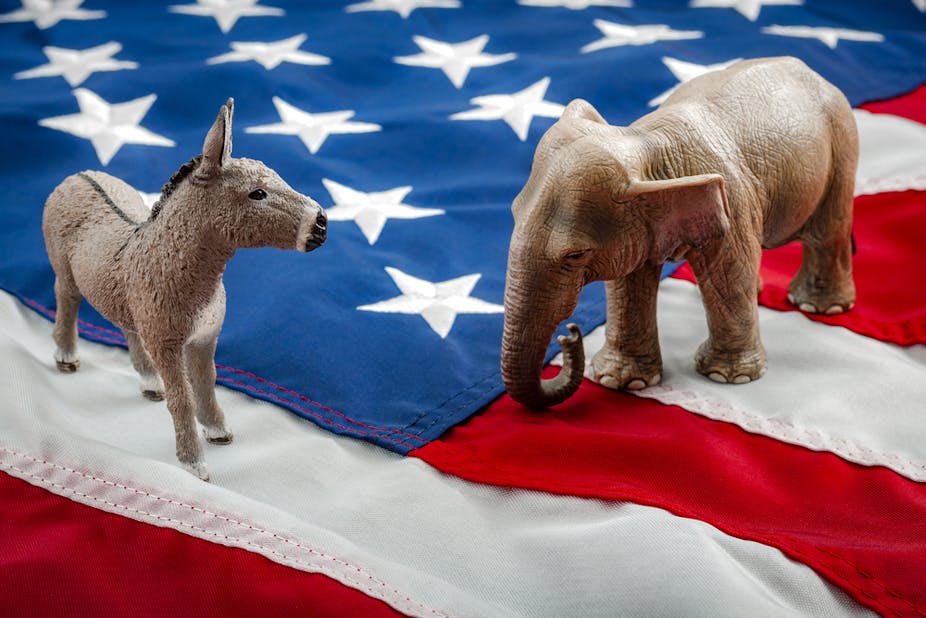Just how democratic is the election for an American president?
You might think that the person who receives the most votes wins, right?
Wrong.
Just ask Al Gore, who in 2000 won more than half-a-million votes more than the “winner”, George W. Bush.
In fact, on four occasions in American history (1824, 1876, 1888, and 2000), the winner of the presidential election actually received fewer votes than their opponent.
This is because, contrary to popular belief, voters do not actually elect the president.
Voters are merely indicating a preference for president, but the task of actually electing the president falls to 538 individual electors to the US Electoral College.
What is the Electoral College?
To put it simply, each state is assigned a number of electors to the Electoral College, based on that state’s delegation to the United States Congress.
There are 50 states.
Each state has two members of the US Senate, so there are 100 senators.
There are 435 members of the US House of Representatives, who are appointed by state on the basis of population, with each state having a minimum of one.
Therefore, the least populous states, such as Alaska and Wyoming, send three members to Congress - two senators and one representative. Conversely, the most populous state, California, sends two senators and 53 representatives, for a total of 55.
California’s vote in the Electoral College is therefore 55.
This means that all 50 states send a total of 535 members to Congress.
In addition, the District of Columbia (Washington D.C.), sends one non-voting member to the House of Representatives (hence the slogan, “taxation without representation”), but no senators. However, when it comes to the Electoral College, D.C. is afforded the same number of votes as the smallest state - three.
The total votes in the Electoral College is therefore 538.
To win the presidency, a candidate needs an absolute majority vote in the Electoral College, which is half plus one, or 270. This is why you will hear a lot about the magic number “270” on Election Day.
If no one wins an absolute majority of the Electoral College, then the election is decided by a vote in the US House of Representatives, which has occurred on just one occasion (1824).
Electoral College “electors” are not usually members of Congress. Depending on the state, “electors” are elected by voters or state legislatures, or they are appointed.
Election day voting
Forty-eight states, plus the District of Columbia, have a winner-takes-all approach to their Electoral College votes. This means that on election day, if Hillary Clinton wins the popular vote in California by a single vote, she wins all of California’s 55 Electoral College votes.
It therefore does not matter by how many votes Clinton or Trump win in each state, as long as they win more than the next person. A majority vote is not required, as the winner of the popular vote for each state by a plurality will win all of the electoral college votes.
There are two exceptions: Maine and Nebraska.
These two states award some of their electoral college votes on the basis of congressional district.
For example, Maine has two members of the House of Representatives, plus two senators, therefore it has four electoral college votes. One vote is awarded to whichever presidential candidate wins the most votes in each of the two congressional districts. The state’s two “senatorial” votes are then awarded to whoever wins the most votes overall in the state. This is why in 2008, Barack Obama won a single vote from Nebraska, because he won one of Nebraska’s three districts, while John McCain won the other two, and the state.
Confused? If you have made it this far, then you are almost an expert! Well done.
Long before election day, we know how most of the states will vote. For example, we know that Alabama will vote for Trump, and we know that Rhode Island will vote for Clinton. In fact, we already know what the result will be in approximately 40 states.
So candidates focus their campaigns on the remaining 10 states in which the outcome is less certain. These states comprise the so-called “swing” states, such as Florida, Ohio, Nevada, Virginia, and Colorado, plus a few others, like North Carolina, Missouri, and Indiana.
In the final two weeks before election day, it is these swing states that will receive all the attention from candidates.
So a presidential candidate is not aiming to win the popular vote across the country. They are not aiming to win all 50 states (although several have come close, such as Richard Nixon in 1972, and Ronald Reagan in 1984, each of whom won 49 states). A presidential candidate is aiming to win a majority of the Electoral College, in whatever shape that takes.
In 2012, Mitt Romney won 24 of 50 states (48%), and 47.2% of the national popular vote, but only won 38% of the electoral college vote.
When they devised the Constitution, the founding fathers did not believe that voters could be trusted to make the correct decision when voting. So the electoral college was conceived as a fail-safe. At the time, no voter in the electoral college was required to vote according to the result on election day. In 2016, there are 21 states that still do not require “electors” to adhere to the wishes of voters, but that is a whole other article.

